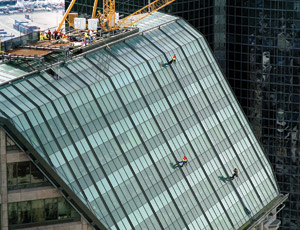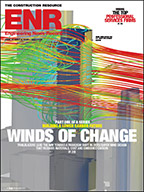In October, Vestas Towers America opened its new 13-million-sq-ft wind tower manufacturing campus in Pueblo.

The campus, the largest of its kind in the world, includes a 400,000-sq-ft production facility where the tower sections are made, a 140,000-sq-ft surface treatment plant where finishes are applied, a 43,000-sq-ft internals building where all of the hardware is installed in sections, and administrative offices. PCL Construction Services Inc., Denver, served as the general contractor.
At the new campus, Vestas Towers America Inc. can process more than 200,000 tons of steel per year — enough to build two bridges the size of the Golden Gate every year or the equivalent of 28 Eiffel Towers. Locating the factory along major highway and railroad lines provides Vestas with the ability to meet customers’ needs with locally managed logistical efficiencies, which translates directly to cost and environmental benefits. The campus also includes eight miles of onsite railway tracks for the transport of materials and finished tower components.
Construction is complete on the first phase of the new $3.5-million Centennial Park, Rifle.
The park, constructed on time and within budget, was designed by Design Concepts CLA, Lafayette. Design Concepts also created the construction documents for Phase I of the park.
The 14-acre linear park is located along Rifle Creek in the heart of the city and connects to the historic downtown on the south end and the county fairgrounds on the north end. It features a “walk through time” along the creek with interpretive areas that highlight the city’s rich history over the past century and its natural environment and cultural diversity. The historic timeline, which follows an existing trail, includes four waysides representing Rifle’s history from 1895 to 1935. The waysides offer seating, shade and interpretive signs that explain the city’s history and provide a perspective of events that were happening in the world.
ECI Site Construction Management, Loveland, built the park. The project employed local subcontractors, creating jobs and stimulating the area’s economy.
Phase II will include a boardwalk through a wetlands area, waysides for 1945 through 2005, a playground, an outdoor classroom, additional picnic shelters, another parking lot, two more bridges and permanent restrooms.


Post a comment to this article
Report Abusive Comment